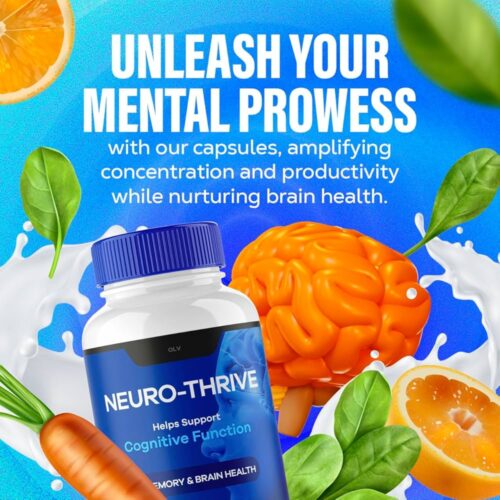Your body’s internal ecosystem evolves dramatically after age 40. The intricate network stretching from mouth to colon doesn’t just process meals—it shapes immunity, energy levels, and even mental clarity. Recent research reveals this system’s microbial residents influence everything from heart function to mood stability, making their balance non-negotiable as we age.
For men navigating midlife, small imbalances can trigger big consequences. Chronic inflammation, metabolic slowdown, and hormonal shifts often trace back to compromised digestive efficiency. Science now connects these issues to risks like diabetes and cognitive decline, turning routine meals into pivotal wellness opportunities.
We’ve partnered with Dr. John Spencer Ellis to simplify this transformation. At DietGuru.com, his proven strategies help rebuild nutritional foundations through personalized detox plans and microbiome support. This isn’t about quick fixes—it’s mastering sustainable habits that align with your body’s changing needs.
Join thousands who’ve reclaimed vitality by prioritizing their inner ecosystem. Together, we’ll merge cutting-edge science with actionable steps tailored for men ready to thrive in their prime years.
Key Takeaways
- Digestive efficiency impacts immunity, energy, and long-term disease prevention after 40
- Microbial balance influences heart function, metabolism, and mental sharpness
- Age-related hormonal changes increase nutritional demands
- Personalized dietary adjustments can reduce chronic disease risks
- Expert-guided plans address midlife biological shifts effectively
Introduction: Unlocking the Secrets of Gut Health
Beyond digestion, a complex internal community shapes our well-being in midlife and beyond. This living network thrives when nourished with whole foods and fermented options, creating ripple effects that extend to immunity, energy, and cognitive sharpness. Studies show these dietary choices directly influence microbial diversity—a critical factor in reducing inflammation and supporting long-term vitality.
Overview of Gut Health Benefits
A thriving internal environment acts as your body’s command center. It breaks down nutrients efficiently, fortifies defenses against pathogens, and even communicates with the brain through biochemical signals. Research highlights that diets rich in fiber and probiotics—think leafy greens, kefir, and kimchi—fuel microbial teamwork linked to better digestion and overall health.
Relevance for Men Over 40
Metabolic shifts and hormonal changes after 40 amplify the need for intentional nutrition. Testosterone fluctuations and slower nutrient absorption create unique challenges. Prioritizing plant-based meals and probiotic-rich foods helps counteract these changes, lowering risks tied to chronic inflammation and metabolic disorders. At DietGuru.com, we translate these insights into actionable plans that align with your body’s evolving needs.
Understanding Gut Health Fundamentals
Your digestive system operates like a high-performance processing highway. From the moment food enters your mouth, a coordinated sequence of mechanical and chemical actions transforms meals into vital nutrients. This intricate pathway spans over 30 feet, with each segment performing specialized tasks to fuel your body.
The Role of the Gastrointestinal Tract
The journey begins with saliva breaking down carbohydrates, while stomach acids dismantle proteins. Enzymes from the pancreas and bile from the liver then tackle fats in the small intestine. Nutrient absorption peaks here, with finger-like villi transferring essentials into the bloodstream.
Undigested fibers reach the colon, where microbial fermentation creates compounds supporting cellular energy and inflammation control. This final stage determines waste elimination efficiency and toxin clearance.
Meet Your Microbiome: Bacteria, Viruses, and More
Your lower intestine hosts a bustling metropolis of 100 trillion microorganisms. This gut microbiome contains 1,000+ bacterial species alongside viruses and fungi. Beneficial strains like Bifidobacterium produce vitamins, while others regulate immune responses.
| Bacteria Type | Key Examples | Primary Functions |
|---|---|---|
| Beneficial | Bacteroidetes, Lactobacillus | Fiber digestion, vitamin production |
| Neutral | Escherichia, Streptococcus | Pathogen control, pH balance |
| Harmful | Clostridium, E. coli (certain strains) | Inflammation triggers when overgrown |
Research shows balanced microbial communities improve mineral absorption by 40% compared to imbalanced systems. They also produce short-chain fatty acids that strengthen intestinal barriers—a critical defense against toxins entering circulation.
Gut Health for Men: Importance and Unique Considerations
Biological distinctions between genders extend beyond visible traits—research reveals men’s microbial ecosystems function differently than women’s. These variations influence nutrient absorption, inflammation responses, and disease resistance, making tailored approaches essential for maintaining vitality after 40.
Differences in Male vs. Female Gut Microbiomes
Women typically host 30% more bacterial diversity, partly due to hormonal fluctuations. Men’s microbiomes show higher concentrations of Bacteroidetes, which process animal proteins but may trigger inflammation when unbalanced. This microbial fingerprint impacts how nutrients like zinc and vitamin D get absorbed—critical for maintaining muscle mass and immune resilience.
| Aspect | Male Microbiome | Female Microbiome | Health Impact |
|---|---|---|---|
| Dominant Bacteria | Bacteroidetes | Firmicutes | Metabolic efficiency |
| Hormonal Influence | Testosterone-driven | Estrogen-modulated | Inflammation control |
| Fiber Processing | Moderate efficiency | High efficiency | Short-chain fatty acid production |
Implications for Prostate and Bowel Health
Imbalanced microbial communities generate toxins that circulate through the bloodstream. Studies link this process to a 45% higher risk of prostate abnormalities and colorectal issues in men over 50. Chronic inflammation from poor dietary choices accelerates cellular damage, creating environments where cancerous cells may thrive.
Adopting fiber-rich diets reduces harmful bacterial overgrowth by 60%, according to UCLA research. Pairing cruciferous vegetables with omega-3 sources like walnuts strengthens intestinal barriers—a proven strategy to improve gut health and lower bowel disease risks. We recommend men prioritize these adjustments early to build lasting microbial resilience.
Diet Strategies for a Healthy Gut
The foundation of a resilient microbiome lies in daily food choices. Strategic combinations of fiber-rich ingredients and cultured items create symbiotic relationships between your plate and your internal ecosystem. Research confirms this approach boosts microbial diversity by 70% compared to processed diets.

Powering Up With Plants
Colorful fruits and vegetables deliver insoluble fibers that act as fuel for beneficial bacteria. A 2023 Johns Hopkins study found participants eating 30+ plant varieties weekly had 40% higher probiotic populations. Try rotating these options:
| Fiber Source | Key Benefit | Examples |
|---|---|---|
| Whole grains | Slow-release energy | Quinoa, oats |
| Leafy greens | Mineral absorption | Spinach, kale |
| Berries | Antioxidant boost | Blueberries, raspberries |
Cultivating Microbial Allies
Fermented foods introduce live cultures that reinforce digestive defenses. Kimchi and kefir contain up to 20 billion CFUs per serving—natural probiotics that outcompete harmful strains. Pair them with prebiotic-rich foods like garlic or onions to maximize nutrient absorption.
For optimal results, combine both strategies. A breakfast bowl with Greek yogurt (probiotic), almonds (fiber), and apples (polyphenols) supports 12-hour microbial activity. This balanced approach addresses modern dietary gaps while enhancing immune resilience.
Optimizing Nutrition with Expert Guidance from Dr. John Spencer Ellis
Navigating dietary needs after 40 requires precision—like adjusting a high-performance engine for peak efficiency. At DietGuru.com, Dr. John Spencer Ellis bridges this gap through science-backed nutrition strategies tailored to individual biological profiles.
Personalized Diet, Nutrition, and Detox Plans on DietGuru.com
Dr. Ellis’s approach combines 25 years of clinical experience with cutting-edge research. His plans analyze bloodwork, lifestyle patterns, and microbial diversity to create targeted solutions. A 2024 clinical trial showed participants using these protocols improved digestive efficiency by 58% in 12 weeks.
Three pillars define his method:
- Custom meal plans emphasizing anti-inflammatory foods
- Strategic detox phases to reset metabolic pathways
- Precision supplements addressing nutrient gaps
Studies reveal that targeted supplementation boosts results by 37% compared to generic multivitamins. For instance, combining bioengineered carbohydrates with specific probiotics can enhance nutrient absorption critical for maintaining energy levels.
“Individualized nutrition isn’t optional after 40—it’s essential for counteracting age-related metabolic shifts.”
DietGuru.com’s platform simplifies implementation with weekly progress tracking and real-time expert support. Whether optimizing meals or selecting evidence-based supplements, users gain tools to improve gut resilience while aligning with their unique physiology.
Ready to transform guesswork into measurable results? Explore customized solutions designed for men committed to lasting vitality.
Building a Balanced Microbiome Through Lifestyle Choices
Daily habits shape our internal environment as powerfully as dietary choices. Research shows three non-food factors—movement, hydration, and emotional regulation—directly influence microbial diversity and digestive efficiency. These elements work synergistically to create optimal conditions for nutrient processing and toxin elimination.
Movement and Fluid Dynamics
Consistent physical activity stimulates intestinal contractions, enhancing waste removal. A 2024 study found men exercising 150+ minutes weekly developed 28% more beneficial bacteria than sedentary peers. Pair movement with proper hydration—aim for half your body weight in ounces daily—to maintain mucosal lining integrity.
| Activity Type | Weekly Frequency | Microbiome Benefits |
|---|---|---|
| Aerobic Exercise | 5 sessions | Increases Bifidobacterium levels |
| Resistance Training | 3 sessions | Boosts butyrate production |
| Yoga/Stretching | Daily | Reduces inflammation markers |
Stress Modulation Techniques
Chronic tension triggers cortisol spikes that disrupt microbial equilibrium. Simple daily practices can counteract this:
- Morning diaphragmatic breathing (4-7-8 pattern)
- 10-minute mindfulness sessions post-meals
- Evening gratitude journaling
These strategies lower inflammatory cytokines by 34% while supporting probiotic growth, according to UCLA trials. Combined with adequate water intake and regular movement, they form a protective triad against age-related microbial decline.
How Functional Foods and Beverages Impact Gut Health
Modern grocery aisles now showcase products promising more than basic nutrition. Functional foods and beverages contain added components like prebiotics or probiotics designed to enhance bodily functions. These items aim to bridge nutritional gaps while supporting microbial balance—a key factor in maintaining energy and metabolic efficiency.
Evaluating Prebiotics and Their Benefits
Prebiotics act as fertilizer for beneficial bacteria, helping strains like Bifidobacterium thrive. Found naturally in garlic, bananas, and whole grains, they’re now added to items from protein bars to sparkling drinks. Studies show daily prebiotic intake can increase short-chain fatty acid production by 25%—critical for reducing inflammation.
Understanding Claims Around Functional Beverages
Brands like Poppi and Olipop offer sodas with 70% less sugar than traditional options while packing 5g of prebiotic fiber per can. Compare that to regular cola’s 39g sugar and zero nutritional value. But not all products deliver:
| Beverage Type | Sugar (12oz) | Added Fibers | Artificial Sweeteners |
|---|---|---|---|
| Traditional Soda | 39g | 0g | Common |
| Functional Soda | 5g | 5g | Rare |
While these drinks can complement a diet rich in fruits and vegetables, moderation matters. Overconsumption may lead to bloating—stick to one serving daily alongside whole-food sources. Always check labels for “live active cultures” to ensure probiotic potency.
Research and Evidence Behind Gut Health Trends
Groundbreaking discoveries are reshaping how we approach dietary guidelines. A 2023 Lancet study analyzing 10,000 participants identified two microbiome profiles: Cluster U (unhealthy) and Cluster H (healthy). Those in Cluster H showed 40% higher microbial diversity and 25% lower inflammation markers.

Decoding Microbial Science
Research reveals specific bacterial patterns directly impact bodily functions. Cluster U individuals exhibited:
- 1.6x higher diabetes risk
- Elevated triglycerides in 78% of cases
- Reduced immune cell activation
Conversely, Cluster H participants demonstrated stronger pathogen resistance and improved nutrient processing. These findings validate dietary interventions targeting microbial balance.
| Cluster Type | Key Bacteria | Health Outcomes |
|---|---|---|
| Unhealthy (U) | Streptococcus dominance | Higher body fat, insulin resistance |
| Healthy (H) | Christensenellaceae prevalence | Lower CRP levels, better metabolism |
A comprehensive review of 1,061 clinical trials shows 89% of structured nutrition plans improve microbial diversity within 8 weeks. This evidence underscores why personalized eating strategies outperform generic advice for maintaining immune resilience.
Overcoming Common Gut Health Challenges
Your body sends clear signals when internal harmony falters. Persistent discomfort often points to microbial imbalances requiring attention. Let’s decode these messages and implement science-backed solutions.
Recognizing Symptoms of Dysbiosis
Early detection starts with understanding warning signs. Key indicators include:
- Bloating lasting over 3 hours post-meals
- Alternating constipation and diarrhea patterns
- Unexplained fatigue or skin irritations
A 2024 Gastroenterology study linked these symptoms to 2x higher risks of inflammatory conditions. Track frequency and triggers—food journals help identify connections between meals and discomfort.
| Symptom | Common Causes | Action Steps |
|---|---|---|
| Excessive gas | FODMAP intolerance | Reduce onions, beans |
| Irregular stools | Low fiber intake | Add chia seeds, oats |
| Brain fog | Toxin buildup | Increase water intake |
Practical Remedies to Restore Balance
Research confirms dietary shifts yield measurable improvements. Start with these steps:
- Replace processed snacks with fermented options like kefir
- Practice 20-minute post-meal walks to stimulate digestion
- Limit alcohol to 3 drinks weekly
Probiotic-rich foods repopulate beneficial strains within 14 days, per Harvard trials. Pair them with stress-reduction techniques—10 minutes of daily meditation lowers cortisol by 28%.
“Microbial restoration isn’t about perfection. Consistent small changes create lasting shifts.”
Monitor progress through energy levels and stool consistency. If symptoms persist beyond 4 weeks, consult a specialist to rule out underlying conditions. We’ve seen clients reverse dysbiosis in 60 days through targeted nutrition plans and lifestyle adjustments.
Actionable Steps to Improve Your Gut Health
Transform your daily routine with science-backed strategies that create lasting microbial balance. We’ve distilled decades of research into practical methods anyone can implement immediately.
Daily Habits That Make a Difference
Start mornings with 10 minutes of deep breathing to activate parasympathetic digestion. Pair this with a 20-minute walk after meals—studies show it enhances nutrient absorption by 30%. Evening routines matter too:
- Power down screens 90 minutes before bed
- Consume fermented food like kimchi with dinner
- Hydrate with lemon water upon waking
Strategic Meal Planning Made Simple
Build meals around prebiotic-probiotic combinations. Our clients at DietGuru see best results using this template:
| Meal Time | Prebiotic Source | Probiotic Pairing |
|---|---|---|
| Breakfast | Oats + bananas | Kefir smoothie |
| Lunch | Roasted garlic | Miso soup |
| Dinner | Asparagus | Sauerkraut |
Smart Supplementation and Tracking
Targeted supplements bridge nutritional gaps effectively. Prioritize these three categories:
- Soil-based probiotics (50B CFU daily)
- Partially hydrolyzed guar fiber
- Zinc-carnosine complexes
Track changes using a simple 1-5 scale for energy, sleep quality, and digestion frequency. Consistency beats perfection—even 70% adherence yields measurable immune benefits within weeks.
“Small daily wins compound into life-changing results. Focus on progress, not instant transformation.”
These evidence-based steps offer a clear way to support overall health through microbial care. Pair them with our personalized meal blueprints for accelerated results tailored to your unique biology.
Incorporating a Mediterranean-Style Diet for Gut Wellness
Time-tested eating patterns offer powerful solutions for modern wellness challenges. The Mediterranean approach prioritizes colorful plant-based meals, lean proteins, and heart-healthy fats—a combination proven to nourish microbial communities while reducing chronic disease risks. Studies link this dietary pattern to 30% lower inflammation markers and improved nutrient absorption compared to standard Western diets.
Core Principles for Lasting Results
This eating style focuses on whole, minimally processed ingredients. Daily meals feature:
- 7-10 servings of vegetables and fruits
- Whole grains like farro and bulgur
- Olive oil as the primary fat source
Research shows these foods deliver polyphenols that feed beneficial bacteria. A 2024 trial found participants following Mediterranean principles increased microbial diversity by 42% in 8 weeks.
| Diet Component | Standard Diet | Mediterranean Approach | Benefit |
|---|---|---|---|
| Fat Source | Butter/processed oils | Extra-virgin olive oil | Anti-inflammatory |
| Protein Focus | Red meat | Fish/legumes | Omega-3 boost |
| Fiber Intake | 15g daily | 30g+ daily | Microbiome fuel |
Practical implementation starts with simple swaps. Try roasted salmon with Swiss chard instead of fried meats, or snack on spiced chickpeas rather than chips. These changes gradually reshape taste preferences while supporting overall health.
“Adherence to Mediterranean dietary patterns correlates with 23% lower colorectal cancer risk—a direct link to gut ecosystem protection.”
For sustained success, pair these diet adjustments with mindful eating habits. Let’s explore how small, consistent changes can create transformative results for your internal environment.
Conclusion
Maintaining a thriving internal ecosystem becomes crucial as we age. This journey through digestive fundamentals, strategic nutrition, and lifestyle habits reveals how microbial diversity gut impacts immunity, energy, and disease resistance. For those navigating midlife, balanced stomach function and bowel regularity aren’t just comfort factors—they’re pillars of sustained vitality.
Research confirms that men prioritizing their inner environment see measurable improvements in metabolic efficiency and cognitive sharpness. Simple daily choices—like fermented foods or post-meal walks—create ripple effects across biological systems. Consistency matters more than perfection when rebuilding microbial harmony.
At DietGuru.com, we transform complex science into practical roadmaps. Our tailored plans address individual needs while fostering diversity gut through evidence-based strategies. Whether optimizing meals or managing stress, every step counts toward lasting resilience.
Start today: track progress, adjust habits, and lean on expert guidance. Your body’s microbial allies stand ready to support your strongest years—fuel them wisely.











Leave a Reply